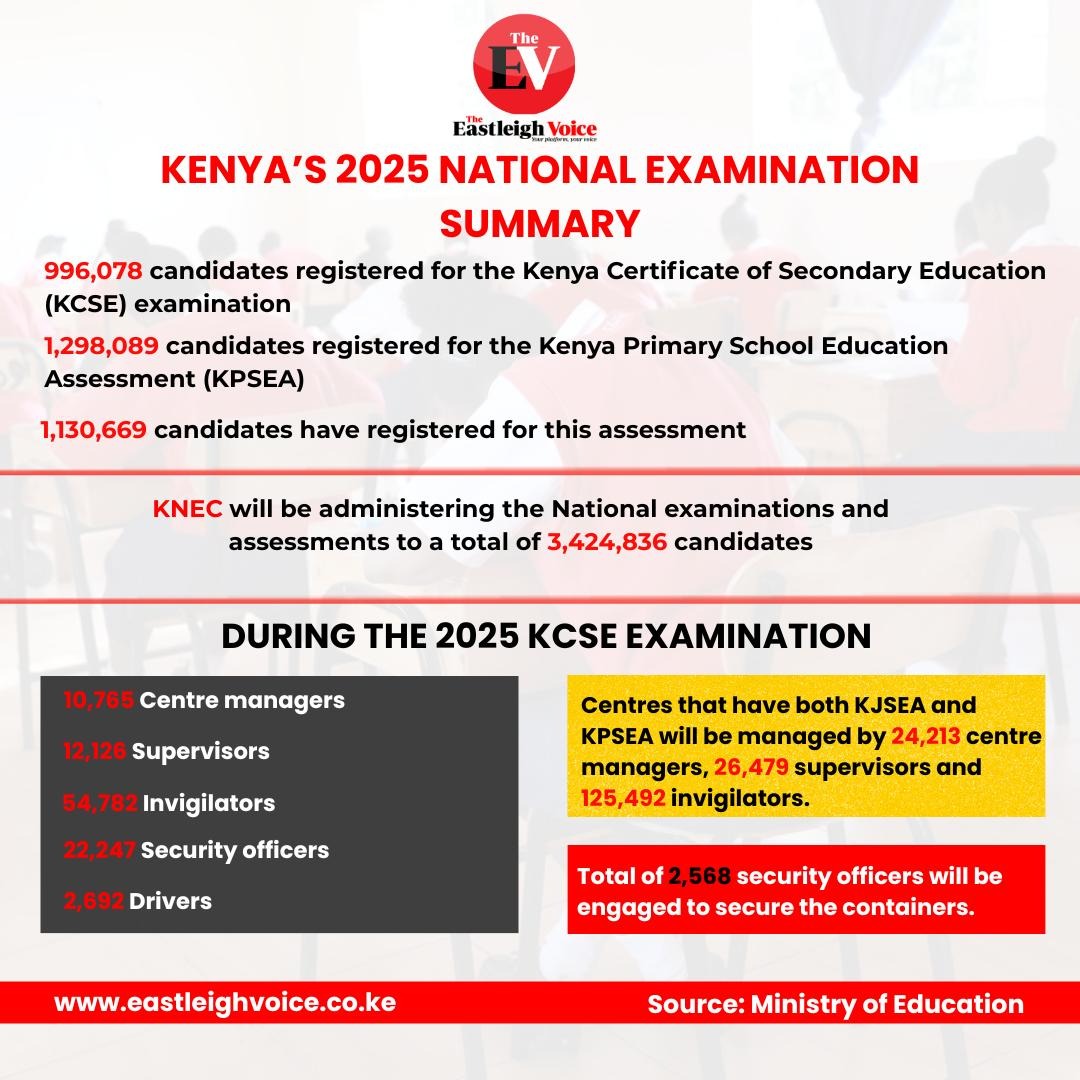World No Tobacco Day: How tobacco industry targets youths to sustain profits

The industry has accelerated the introduction and marketing of flavoured products, with research confirming that flavour is a primary reason why youth try e-cigarettes and other nicotine products.
The World Health Organization (WHO) has released a report detailing how the tobacco industry targets children and young adults to maintain and expand its customer base. The report highlights that most adult tobacco users start during their youth, with a significant number becoming hooked before the age of 21.
The tobacco industry employs numerous tactics to attract young users, aiming to replace customers who quit or die.
More To Read
- 'No smoking' in Southeast Asia: A region quits tobacco
- Senate approves Bill to tighten tobacco regulations
- China flagged as key source of tobacco imports as Kenya imposes ban to curb youth addiction
- Ethiopia nears milestone in tobacco control - WHO
- Candy-coated killers: How tobacco industry hooks youth with flavours, false glamour
- Duale suspends licences for distribution of nicotine products, orders re-application in 21 days
An estimated 37 million children aged 13-15 years currently use tobacco. In many countries, the use of electronic tobacco products is more prevalent among young people than older generations.
In the WHO European Region, e-cigarettes have surpassed conventional cigarettes in popularity, with 32 per cent of 15-year-olds surveyed reporting e-cigarette use at some point and 20 per cent in the past 30 days.
The industry's range of youth-appealing products has significantly expanded from traditional cigarettes and cigarillos to e-cigarettes, heated tobacco products, and nicotine pouches. Flavoured products, sleek designs, and child-friendly packaging make these addictive products more appealing to youth.
The industry continuously launches new products that often sidestep current laws, using every available means to expand market share before regulations can catch up. These tactics include positioning many nicotine products as "safer" than cigarettes, potentially distracting policymakers and consumers from the fact that nicotine itself is addictive and harmful, especially to children and youth.
For example, e-cigarettes with nicotine are highly addictive and harmful to health, generating toxic substances that increase the risk of cancer and heart and lung disorders. E-cigarette use can also affect brain development, potentially leading to learning and anxiety disorders in young people.
Internal tobacco industry documents dating back to the 1970s reveal that tobacco companies have long considered children and youth to be "replacement smokers" and a critical market for sustaining their business.
Today, the industry has more products and communication channels at its disposal to reach youth, aggressively marketing products in digital environments where the audience can be easily targeted. Digital platforms, complex to monitor and regulate, offer various ways to subvert bans on tobacco advertising, promotion, and sponsorship, directly engaging with young people and even selling to them.
A survey of 15- to 30-year-olds in four countries that restrict tobacco advertising found that 85 per cent were exposed to e-cigarette advertising across multiple media platforms, with higher rates of exposure linked to higher rates of e-cigarette use.
The Campaign for Tobacco-Free Kids' report #SponsoredByBigTobacco highlights that content promoting e-cigarettes, nicotine pouches, and heated tobacco products from British American Tobacco (BAT) and Philip Morris International has been viewed over 3.4 billion times on social media platforms, reaching over 150 million youth under 25.
The industry has accelerated the introduction and marketing of flavoured products, with research confirming that flavour is a primary reason why youth try e-cigarettes and other nicotine products.
E-cigarettes are available in at least 16,000 unique flavours. The industry finds ways around flavour bans by reformulating products or launching accessories like flavour capsules or cigarette pack inserts.
Surveys suggest youth prefer flavoured products, with studies finding that nearly nine in 10 current e-cigarette users use a flavoured product. Flavours keep youth hooked, with over 70 per cent of youth e-cigarette users indicating they would quit if only tobacco flavours were available.
E-cigarette producers manufacture products in various forms, including designs resembling toys, candy, or child-friendly drinks, incorporating cartoon characters or sleek, high-tech designs that appeal to young people. Many e-cigarettes are designed for discreet use, marketed as such, and can be integrated into clothing or disguised as everyday items to be used in places where smoking or e-cigarette use is not permitted.
Tobacco and related industries interfere with public health policy-making by suggesting their products are reduced-risk alternatives for adult smokers or cessation aids. Research indicates that children aged 13-15 years are using e-cigarettes at higher rates than adults in all WHO regions, with most not having been previous tobacco users.
Targeted tobacco marketing includes paid ads on social media, product promotion by influencers, product placement in popular streaming shows, sponsorship of youth-oriented events, and digital platforms.
The industry also sponsors music festivals and events, offering free samples and raising awareness of their products among young audiences. Sales tactics include pricing strategies that make products affordable for youth, such as single cigarettes, nicotine pouches, and disposable e-cigarettes. Reports indicate that under-18-year-olds are sold tobacco and nicotine products or offered free samples in various countries.
Examples of industry marketing tactics include BAT Nigeria Foundation partnering with the National Youth Service Corps for young entrepreneurs, China National Tobacco Corporation sponsoring schools, and Philip Morris International sponsoring music festivals.
In Pakistan, BAT partnered with Spotify to promote Velo products, while in Switzerland, the tobacco industry supported a campaign against tobacco advertising restrictions.
The tobacco and related industries use misleading messages and messengers to influence public opinion and appeal to youth. They portray themselves as sustainable, socially responsible, and committed to reducing harm, but these claims are often contradicted by their actions and the harmful impact of their products.
The industry funds pseudo-science and attempts to discredit proven research to manipulate policies and reduce regulation.
The WHO emphasises the need for comprehensive bans on tobacco advertising, promotion, and sponsorship (TAPS) across all media and products and urges governments to implement measures to protect youth from industry tactics and ensure public health policies are not influenced by the tobacco industry.
The Panama Declaration, adopted at the recent COP10 session, reiterates the conflict between the tobacco industry's interests and public health, calling for policy coherence within governments to protect future generations.
Top Stories Today













































